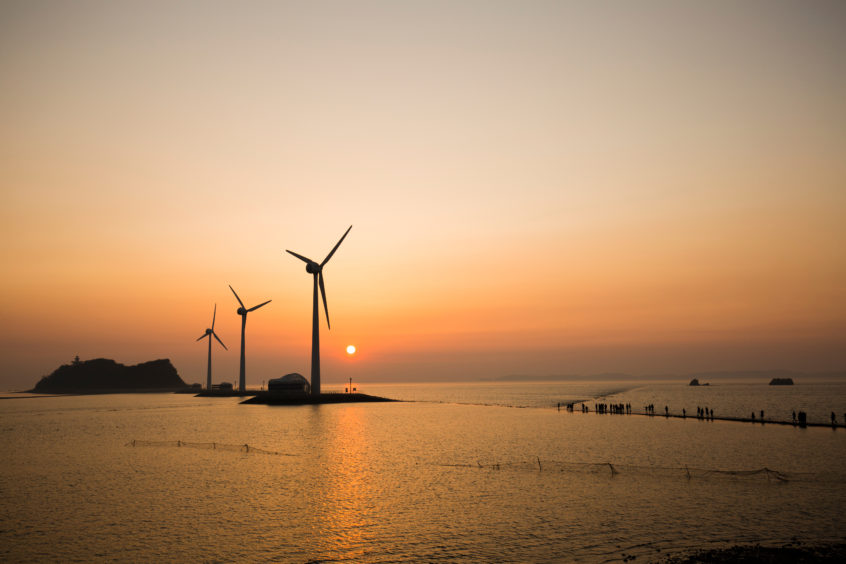
Investments in Asia Pacific wind and solar power could double to $1.3 trillion over the current decade to 2030 compared with the period 2011-20, predicts Wood Mackenzie. However, in most Asian markets, subsidy-free renewable power will not be able to compete with coal power until 2025 or later, cautioned the energy research company.
“Asia Pacific power generation investments are leading the world and expected to hit $2.4 trillion in the current decade, with renewables accounting for over half or $1.3 trillion of power investments,” Alex Whitworth, research director, told the inaugural Wood Mackenzie Asia Pacific power and renewables conference in Singapore.
In contrast to renewables, fossil fuel power investments are expected to decline by around 25% to $54 billion a year.
Coal is expected to make up 55% of fossil fuel investments until 2030 but shrink to 30% in the 2030s as gas dominates, added Whitworth.
Under the current transition decade, subsidies across Asia are rolled back, while stronger policy targets and cost declines will continue, said Wood Mackenzie.
Top contributors to wind and solar investments in Asia Pacific include mainland China, Japan, India, South Korea and Taiwan region. Between 2021 and 2030, annual additional wind and solar capacities will average at around 140 gigawatts (GW) per year, accounting for two-thirds of average total power capacity additions in the region by 2030, according to Wood Mackenzie.
“China’s 1,200 GW of wind and solar capacity target by 2030 will require more than 534 GW of renewables to be added over the next decade. This will boost annual wind capacity to over 40 GW from 2021 to 2030,” said Wood Mackenzie principal consultant Xiaoyang Li.
While “offshore wind power will play a key role in supporting Japan’s 2050 net-zero target. Meeting this target would require building new offshore wind capacity equivalent to one new nuclear reactor every year until the middle of this century,” said Wood Mackenzie principal analyst Robert Liew.
Research analyst Ken Lee added that South Korea would quickly become one of the leaders of offshore wind in Asia with nearly 4.4 GW in the immediate development pipeline.
Meanwhile, Southeast Asia will collectively require around $14 billion a year of wind and solar investments to 2040, forming just under half of total power investments.
Senior analyst Rishab Shrestha said that “Southeast Asia is one of the hottest solar market regions in the world, with installed capacity more than doubling every year since 2018. There will be a momentary slow down with subsidies pulled back, but the region will add over 100 GW of solar in the next ten years.”
Asia Pacific is the epicentre of solar technology innovation and manufacturing. Home to the world’s largest solar module manufacturers and PV inverter manufacturing, the region is the test field of many new technologies that have great potential to lower both solar capex and O&M cost.
Australia’s wind and solar investments, on the other hand, will drop by 60% in the next five years, but pick up again to average $7 billion a year in the 2030s.
“Australia is a leader in the energy transition in Asia Pacific. The country has the highest variable renewable energy share in generation now and will accelerate the share from 20% in 2020 to 78% by 2050. The country is closing ageing coal-fired plants and facing reliability and cost challenges at least ten years earlier than other Asian countries,” commented senior analyst Le Xu.
Along with strong renewables investments this decade, Wood Mackenzie expects carbon emissions from the Asia Pacific power sector to peak at 7.3 billion tonnes (Bt) in 2025, which equates to 1.8 tonnes per person, less than half the level of most developed countries.
“Although we expect a 47% drop in carbon emissions from the power sector from its peak of 7.3 Bt in 2025, inertia in the coal power fleet will prevent Asia Pacific from reaching carbon-free power by 2050,” said Whitworth.
“Adapting new emission reduction technologies such as carbon capture and storage and green fuels (hydrogen, ammonia, biomass etc.) into coal and gas generation will be key in reducing power sector emissions,” added Whitworth.
Recommended for you

